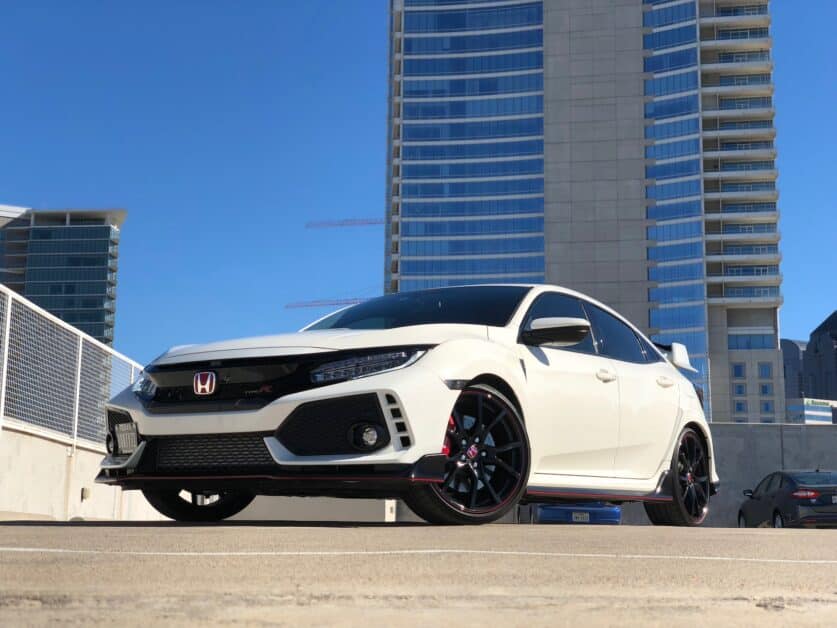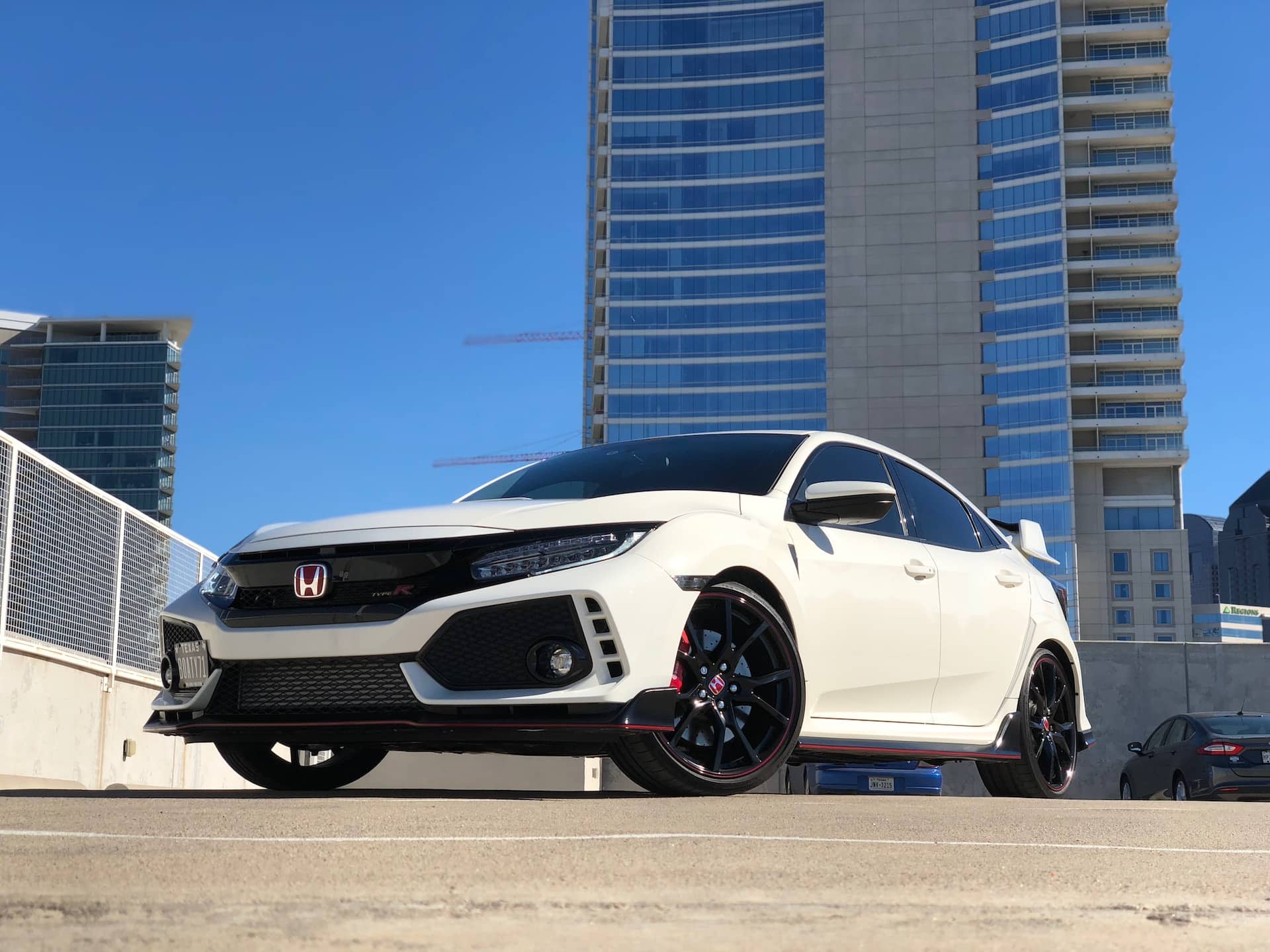
The Honda B14 service is a comprehensive maintenance package designed to keep your vehicle in peak condition. It includes tasks such as an oil and filter change, tire rotation, brake inspection, and the replacement of components like the timing belt and spark plugs. This service is essential for maintaining the longevity and performance of your Honda vehicle.
Key Takeaways
- Honda B14 service is a comprehensive maintenance package for your vehicle.
- Tasks include oil and filter change, tire rotation, brake inspection, and replacement of critical components.
- This service ensures optimal performance and longevity for your Honda vehicle.
- Maintaining regular B14 service is essential for your Honda’s longevity and performance.
- Trust the experts to provide professional insights and tips for your Honda’s maintenance needs.
What Is Honda B14 Service
The Honda B14 service is a comprehensive maintenance package designed to address both standard upkeep and specific components that require attention after a certain mileage threshold. It is a part of the Honda maintenance package that ensures your vehicle remains in optimal condition. This service is crucial for maintaining the longevity and performance of your Honda vehicle.
The B14 service is divided into three sections: “B”, “1”, and “4”. The “B” service includes essential tasks such as an oil and filter change, fluid level checks, and brake inspection. The “1” section focuses on tire rotation, which helps ensure even wear and extends the lifespan of your tires. The “4” part involves the replacement of the timing belt and spark plugs, which are critical components for the smooth operation of your vehicle.
By following the Honda B14 service schedule, you can ensure that your Honda vehicle is well-maintained and performs optimally. Regular servicing not only helps prevent potential issues but also contributes to your safety and the overall reliability of your Honda. Now, let’s take a closer look at each component of the Honda B14 service and understand its importance.
Table: Honda B14 Service Breakdown
| Section | Service | Description |
|---|---|---|
| B | Oil and Filter Change | Draining and replacing the engine oil and oil filter with Honda-approved synthetic blend oil. |
| B | Fluid Levels | Checking and topping off coolant, brake fluid, power steering fluid, and transmission fluid. |
| B | Brake Inspection | Inspecting brake operation and components such as pads, rotors, calipers, and brake lines. |
| 1 | Tire Rotation | Removing and repositioning each wheel to ensure even wear and extend tire lifespan. |
| 4 | Replace Timing Belt | Replacing the timing belt and inspecting associated components to maintain proper engine performance. |
| 4 | Spark Plugs | Replacing spark plugs with Honda OEM iridium plugs to ensure optimal ignition and fuel efficiency. |
Engine Oil & Filter Change (“B” Service)
The engine oil and filter change is a crucial part of the Honda B14 service. This task involves draining the used oil, replacing the oil filter, and refilling the engine with new Honda-approved synthetic blend oil. By regularly changing the engine oil and filter, you can reduce friction, maximize fuel economy, and keep contaminants from affecting engine performance.
It is important to use Honda filters and adhere to the recommended oil change interval to ensure the optimal functioning and longevity of your engine. Honda filters are designed specifically for your vehicle, providing superior filtration and protection. Additionally, following the recommended oil change interval helps maintain the proper balance of additives in the oil, ensuring optimal lubrication and engine performance.
During the engine oil and filter change, the technician will also inspect for any signs of leaks or damage. Detecting these issues early on can prevent more significant problems down the line. By performing the engine oil and filter change as part of the Honda B14 service, you are taking an important step in maintaining the performance and reliability of your vehicle.
Fluid Levels (“B” Service)
Checking fluid levels is an essential part of the Honda B14 service. Technicians inspect and top off the coolant, brake fluid, power steering fluid, and transmission fluid reservoirs to ensure they are within the recommended range. Proper fluid levels are crucial for efficient cooling, lubrication, and overall system performance. It is important to use Honda OEM fluids to maintain the highest quality and prevent potential issues.
Fluid Level Checks
During the “B” service of the Honda B14 maintenance package, technicians carefully examine the fluid levels in various vital systems of your vehicle. This includes the coolant, brake fluid, power steering fluid, and transmission fluid reservoirs. By checking these fluid levels, technicians can ensure that your vehicle has the appropriate amount of fluid for optimal performance.
During the fluid level check, technicians will inspect each reservoir and top off the fluid as needed to bring it to the recommended level. They will also examine the condition of the fluid and look for any signs of contamination or degradation. If any issues are detected, they can recommend appropriate actions, such as flushing and replacing the fluid.
Proper Fluid Fill
Ensuring proper fluid fill is essential for maintaining the performance and longevity of your vehicle. Each fluid serves a specific purpose, such as cooling the engine, lubricating the transmission, or assisting with braking. When these fluids are at the correct level, they can perform their intended functions effectively.
Using Honda OEM fluids is highly recommended during the B14 service. These fluids are specifically designed for Honda vehicles and have undergone rigorous testing to meet the manufacturer’s standards. By using OEM fluids, you can ensure the highest quality and compatibility with your vehicle’s systems.
| Fluid | Recommended Level | Recommended Interval |
|---|---|---|
| Coolant | Between the minimum and maximum marks on the coolant reservoir | Check at least once a month or as recommended in the owner’s manual |
| Brake Fluid | Between the minimum and maximum marks on the brake fluid reservoir | Check at least once a month or as recommended in the owner’s manual |
| Power Steering Fluid | Between the minimum and maximum marks on the power steering fluid reservoir | Check at least once a month or as recommended in the owner’s manual |
| Transmission Fluid | As specified in the owner’s manual | Check at the recommended interval or as recommended in the owner’s manual |
Brake Inspection (“B” Service)
One of the crucial components of the Honda B14 service is the comprehensive brake inspection. This inspection is essential for maintaining the safety and performance of your vehicle. During the brake inspection, highly trained technicians thoroughly examine the braking system and its components to ensure everything is in optimal condition.
Components Checked During the Brake Inspection:
- Brake pads: Technicians inspect the brake pads for wear and tear. If the pads are too worn, they need to be replaced to maintain effective braking performance.
- Brake rotors: The rotors are examined for any signs of damage or warping. If necessary, machining or replacement may be recommended to ensure proper braking function.
- Brake calipers: The calipers are inspected for leaks, damage, or sticking. If any issues are detected, the calipers may need to be repaired or replaced.
- Brake lines: Technicians check the brake lines for any signs of leaks, corrosion, or damage. Damaged brake lines can compromise the braking system’s integrity and should be addressed promptly.
Regular brake inspections are crucial for identifying any potential issues early on. Detecting and resolving brake problems promptly can help prevent safety hazards, such as brake failure, and save you from expensive repairs down the line. By prioritizing regular brake inspections as part of the Honda B14 service, you can ensure reliable braking performance and peace of mind on the road.
| Component | Inspection | Action |
|---|---|---|
| Brake pads | Check for wear and tear | Replace if necessary |
| Brake rotors | Inspect for damage or warping | Machining or replacement if needed |
| Brake calipers | Check for leaks, damage, or sticking | Repair or replace as required |
| Brake lines | Inspect for leaks, corrosion, or damage | Address any issues promptly |
Overall Vehicle Inspection (“B” Service)
The overall vehicle inspection is a crucial component of the Honda B14 service. This comprehensive check ensures that all aspects of your vehicle are thoroughly examined, identifying any potential issues that may affect its performance and safety. During the inspection, technicians meticulously examine the exterior, undercarriage, battery, lighting, electronics, and accessories to ensure everything is in proper working order. This thorough assessment helps catch emerging issues early on, allowing for timely repairs and preventing breakdowns or unsafe conditions.
By conducting an overall vehicle inspection as part of the B14 service, you can have peace of mind knowing that your Honda is in top shape. It serves as a maintenance check-up, providing a comprehensive overview of your vehicle’s condition. Regular inspections help maintain the reliability and performance of your Honda, contributing to its longevity and ensuring that it continues to run smoothly on the road.
Benefits of the Overall Vehicle Inspection
- Early detection of potential issues
- Prevents breakdowns and costly repairs
- Ensures optimal performance and safety
- Enhances the longevity of your Honda
By investing in the overall vehicle inspection as part of the B14 service, you can stay proactive in maintaining your Honda’s condition and ensuring that it remains a reliable and safe mode of transportation. Trusting the expertise of technicians and adhering to the recommended maintenance schedule will keep your Honda performing at its best for years to come.
Table: Components Checked During the Overall Vehicle Inspection
| Exterior | Undercarriage | Battery | Lighting | Electronics | Accessories |
|---|---|---|---|---|---|
| Body condition and paint | Suspension components | Battery voltage and connections | Headlights, taillights, and indicators | Audio system, navigation, and display | Power windows, mirrors, and seats |
| Windshield and wipers | Exhaust system | Charging system | Brake lights and turn signals | Air conditioning and heating | Interior lights and controls |
| Tire condition and pressure | Brake lines and hoses | Starter motor operation | Interior and exterior bulbs | Instrument cluster and gauges | Steering wheel functions |
Tire Rotation & Checking Overall General Condition Of Tires (“1” Service)
As part of the Honda B14 service, tire rotation plays a crucial role in maintaining the performance and lifespan of your Honda vehicle. This service involves removing each wheel, inspecting the tread depth and overall condition of the tires, and repositioning them according to Honda’s rotation pattern. By redistributing the wear across all four tires, tire rotation helps ensure even tire wear, prolonging the life of your tires and maximizing their performance.
Tire rotation is particularly important because front and rear tires wear differently due to variations in weight distribution and steering characteristics. By regularly rotating the tires, you can prevent uneven wear patterns and extend the overall life of your tires, saving you money in the long run. Additionally, proper tire rotation promotes optimal handling, fuel economy, and safety on the road.
During the tire rotation process, technicians also thoroughly inspect the tires’ general condition. They check for signs of damage, such as cracks, bulges, or punctures, which may affect the tire’s structural integrity or compromise safety. Identifying these issues early on allows for timely repairs or replacements, ensuring that your Honda is equipped with reliable and road-worthy tires.
| Tire Rotation Benefits: |
|---|
| 1. Even tire wear for extended tire life |
| 2. Improved handling, fuel economy, and safety |
| 3. Early detection of tire damage for prompt repairs |
Regular tire rotation and inspection are essential for maintaining the optimal performance and safety of your Honda vehicle. By including this service as part of your Honda B14 maintenance plan, you can enjoy a smooth and comfortable ride while prolonging the life of your tires.
Honda B14 Service: Timing Belt Replacement and Engine Maintenance
The Honda B14 service includes a range of maintenance tasks aimed at keeping your vehicle in peak condition. One crucial aspect of this service is the replacement of the timing belt. The timing belt plays a vital role in synchronizing the rotation of the camshaft and crankshaft, ensuring proper valve timing for optimal engine performance. Over time, the timing belt can wear out and become prone to snapping, which can lead to severe engine damage. To prevent this, it is recommended to replace the timing belt around the 100,000-mile mark. During the replacement process, our technicians will also inspect and replace any worn components associated with the timing belt to ensure the smooth operation of your engine.
In addition to timing belt replacement, the Honda B14 service also includes other important engine maintenance tasks. These may include inspecting and replacing the serpentine belt, checking and topping off fluids, and inspecting the overall condition of the engine components. By addressing these maintenance needs, you can prevent potential issues and ensure your engine operates smoothly and efficiently.
Table: Components Replaced During the Honda B14 Service
| Component | Replacement Interval |
|---|---|
| Timing Belt | Approximately every 100,000 miles |
| Serpentine Belt | As needed, based on inspection |
| Other engine components | As needed, based on inspection |
By following the recommended maintenance schedule and addressing the engine maintenance needs of your Honda, you can enjoy reliable performance and extend the lifespan of your vehicle. Trust our skilled technicians to perform the necessary tasks with precision and expertise, ensuring your Honda remains in optimal condition.
Spark Plugs (“4” Service)
Spark plug replacement is a crucial part of the Honda B14 service that focuses on maintaining the ignition system. Spark plugs play a vital role in igniting the fuel/air mixture in the combustion chambers, powering the engine. Over time, spark plugs can wear out and hinder performance, resulting in issues such as misfires, rough running, and reduced fuel efficiency. Regularly replacing the spark plugs is essential to restore peak firing energy and ensure optimal engine performance.
During the “4” service of the Honda B14 maintenance package, technicians replace the old spark plugs with high-quality Honda OEM iridium plugs. Iridium plugs are known for their durability, consistent performance, and excellent resistance to fouling. These plugs provide reliable ignition, resulting in smooth running, quick starts, and improved fuel economy.
By replacing the spark plugs as part of the Honda B14 service, you can maintain the optimal functioning of your vehicle’s ignition system. This ensures that your engine operates smoothly and efficiently, maximizing both performance and fuel economy. Trusting the experts to handle the spark plug replacement during the B14 service will help keep your Honda vehicle running at its best.
Conclusion
The Honda B14 service is a comprehensive maintenance package designed to ensure the optimal performance and longevity of your vehicle. With tasks ranging from engine oil and filter changes to tire rotations, brake inspections, and the replacement of critical components like the timing belt and spark plugs, this service covers all the essential aspects of Honda maintenance.
By investing in the B14 service, you are investing in the future of your Honda vehicle. Regular maintenance not only helps keep your vehicle running smoothly but also prevents potential breakdowns and costly repairs. Trust the experts to provide the professional insights and tips needed to maintain your vehicle’s performance at its best.
With the Honda B14 service, you can have peace of mind knowing that your vehicle is in good hands. Whether it’s checking fluid levels, inspecting brakes, or conducting a comprehensive vehicle inspection, the B14 service ensures that all components are in proper working order. By following the recommended maintenance schedule, you can maximize the lifespan of your Honda and enjoy optimal vehicle performance for years to come.
FAQ
What is the Honda B14 service?
The Honda B14 service is a comprehensive maintenance package designed to address both standard upkeep and specific components that require attention after a certain mileage threshold.
What tasks are included in the “B” portion of the service?
The “B” portion of the service includes an oil and filter change, fluid level checks, and brake inspection.
What does the “1” part of the service involve?
The “1” part focuses on tire rotation.
What is included in the “4” section of the service?
The “4” section involves the replacement of the timing belt and spark plugs.
Why is the engine oil and filter change important?
The engine oil and filter change helps reduce friction, maximize fuel economy, and clean contaminants.
What is checked during the fluid level checks?
Technicians inspect and top off the coolant, brake fluid, power steering fluid, and transmission fluid reservoirs.
Why is the brake inspection important?
The brake inspection helps identify potential issues before they lead to safety concerns and costly repairs.
What is included in the overall vehicle inspection?
Technicians examine the exterior, undercarriage, battery, lighting, electronics, and accessories to spot any emerging issues.
Why is tire rotation necessary?
Tire rotation ensures even wear across the tread and maximizes the lifespan of the tires.
Why should the timing belt be replaced?
The timing belt synchronizes the camshaft and crankshaft rotation and should be replaced around 100,000 miles to avoid potential failure.
Why are spark plugs replaced?
Spark plugs can wear out over time and hinder performance, so replacing them restores peak firing energy and optimal ignition.


